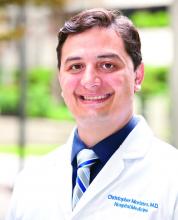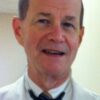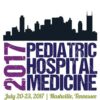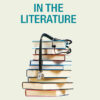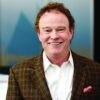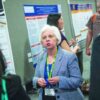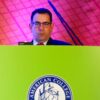Learn how to lead the battle against unnecessary testing
The steps that hospitalists can take to effect change in their home institutions will be the focus of Tuesday morning’s session at 10:35–11:15 a.m., “Overcoming a Culture Overrun with Overuse.”
“Overuse is one of the [biggest] issues that we’re facing right now in health care,” said presenter Christopher Moriates, MD, assistant dean for health care value at the University of Texas at Austin. “The estimates are that about a third of what we do in health care is unnecessary. If you look at areas like lab testing in hospitals, it might be even more than that.”
Although it is clearly imperative for hospitalists to provide high-value care, there has been relatively limited progress toward truly decreasing overuse, Dr. Moriates said. Creating lists and guidelines from the Choosing Wisely campaign, which questions unnecessary medical tests and procedures, is “incredibly important but insufficient.”
“We must also address our medical culture that, through many different mechanisms, reinforces overuse,” he added. “The way we’re trained, the way we think about addressing problems in the hospital, the way that hospitals are set up and organized – all of these things contribute to us ordering more tests or doing more things.”
The session will discuss culture change as a general concept and introduce a framework for understanding and targeting culture change. The presentation also will demonstrate how culture contributes to overuse and low-value care, describe specific interventions that support culture change, and define opportunities to ensure the delivery of high-value care to patients.
One initiative to be discussed is Caring Wisely, which Dr. Moriates helped implement in 2012 at the University of California, San Francisco. The program takes the ideals of Choosing Wisely and, by crowdsourcing among front-line hospital staff, looks for ways to cut health care waste.
“We will highlight specific examples for how hospitalists can lead programs and work with others to decrease overuse, even within other departments,” Dr. Moriates said. “For example, we will discuss a successful resident-led program to decrease phlebotomy rates in the hospital, which can be replicated by other medical center or resident groups.”
Hospitalists at any level, in any setting, can help contribute to culture change, either by mimicking programs like Caring Wisely or by implementing simple changes in the way we speak to patients and each other.
“Every time we make decisions and we have conversations with patients, trainees, or consultants, we have the ability to either contribute to or take away from that culture of overuse,” Dr. Moriates said. “We’ll also discuss how hospitalists can lead efforts to organize multidisciplinary teams around decreasing common areas of overuse.”
On all levels, hospitalists have an important role to play. “We should all recognize that we lead from where we stand, no matter what our position or title may be,” Dr. Moriates said.
Overcoming a Culture Overrun with Overuse
Tuesday, 10:35 a.m.-11:15 a.m.
